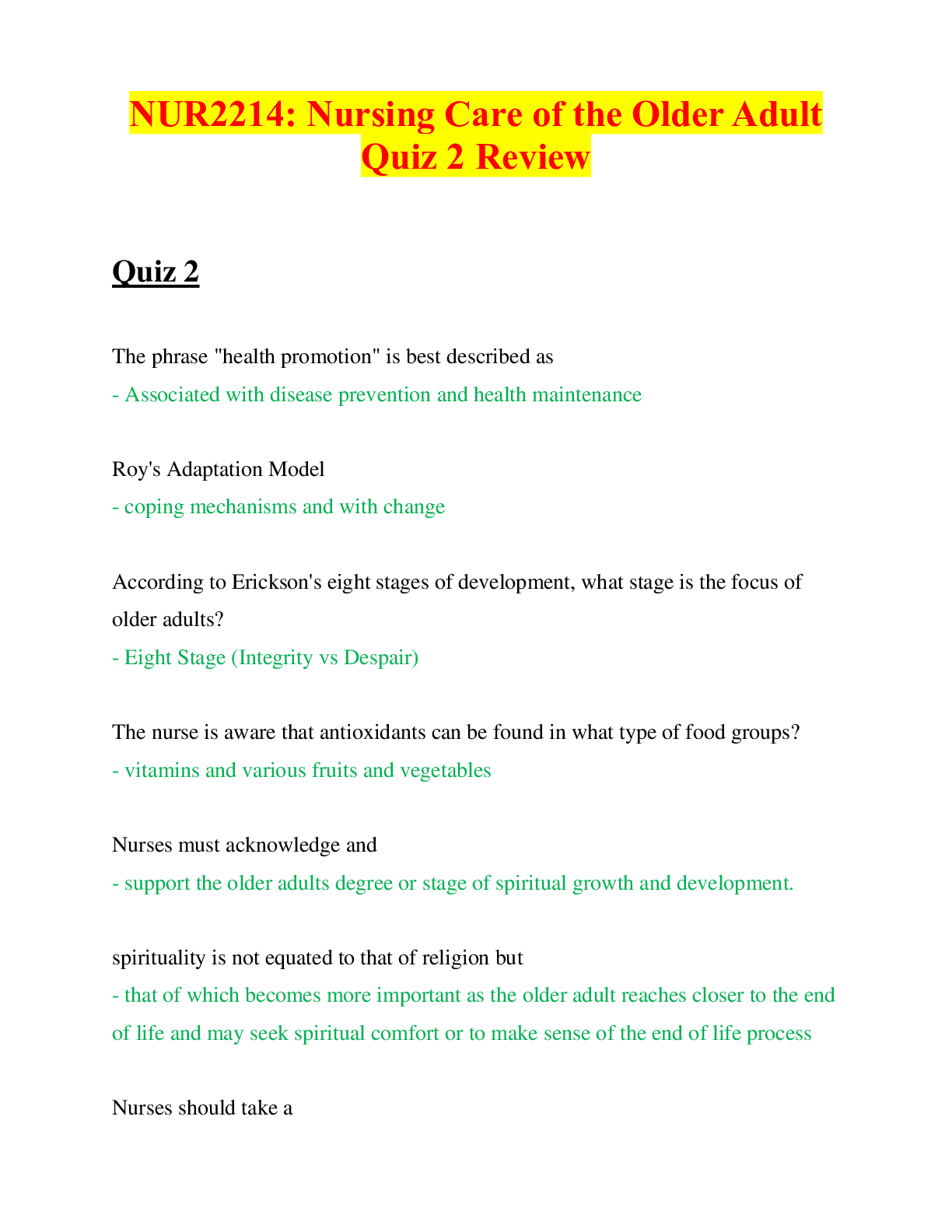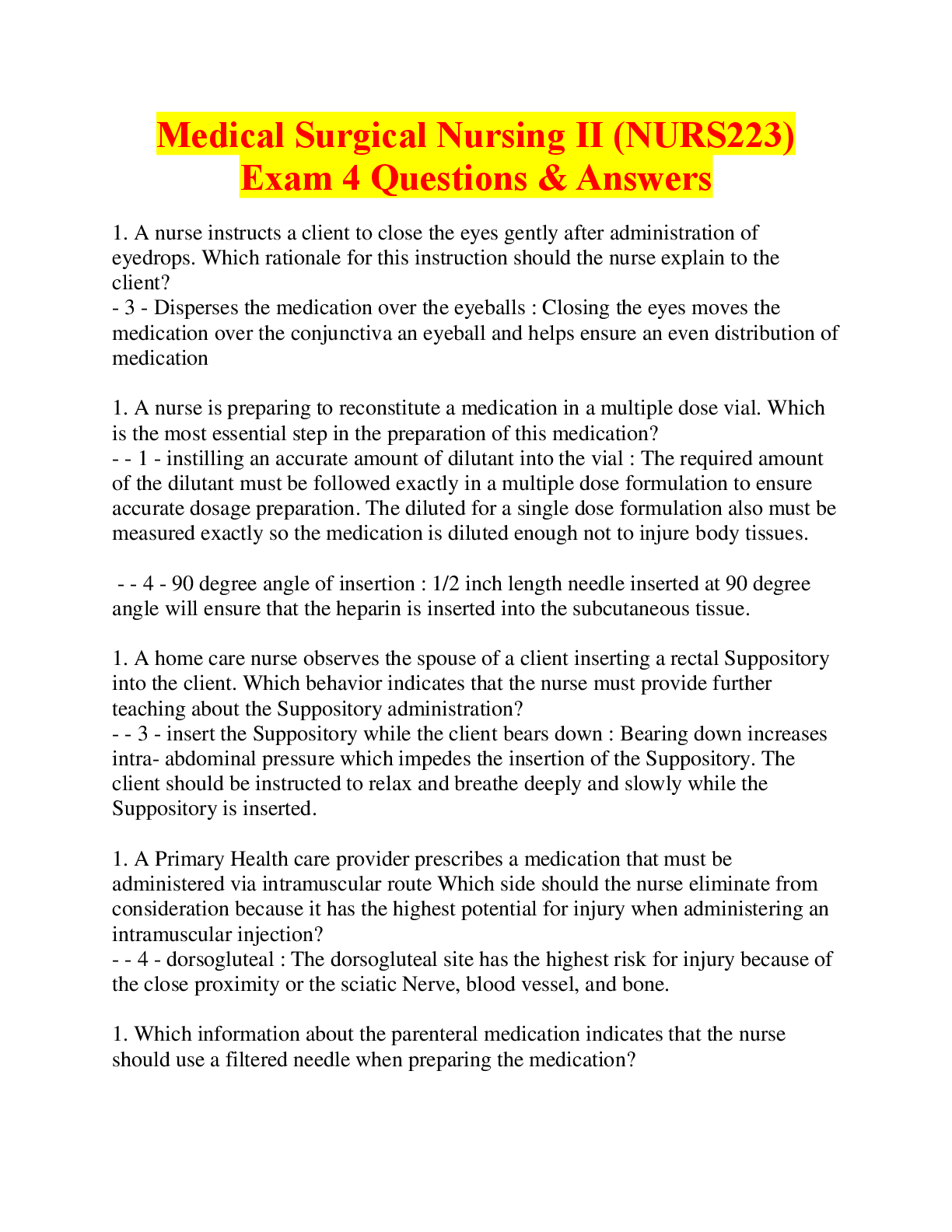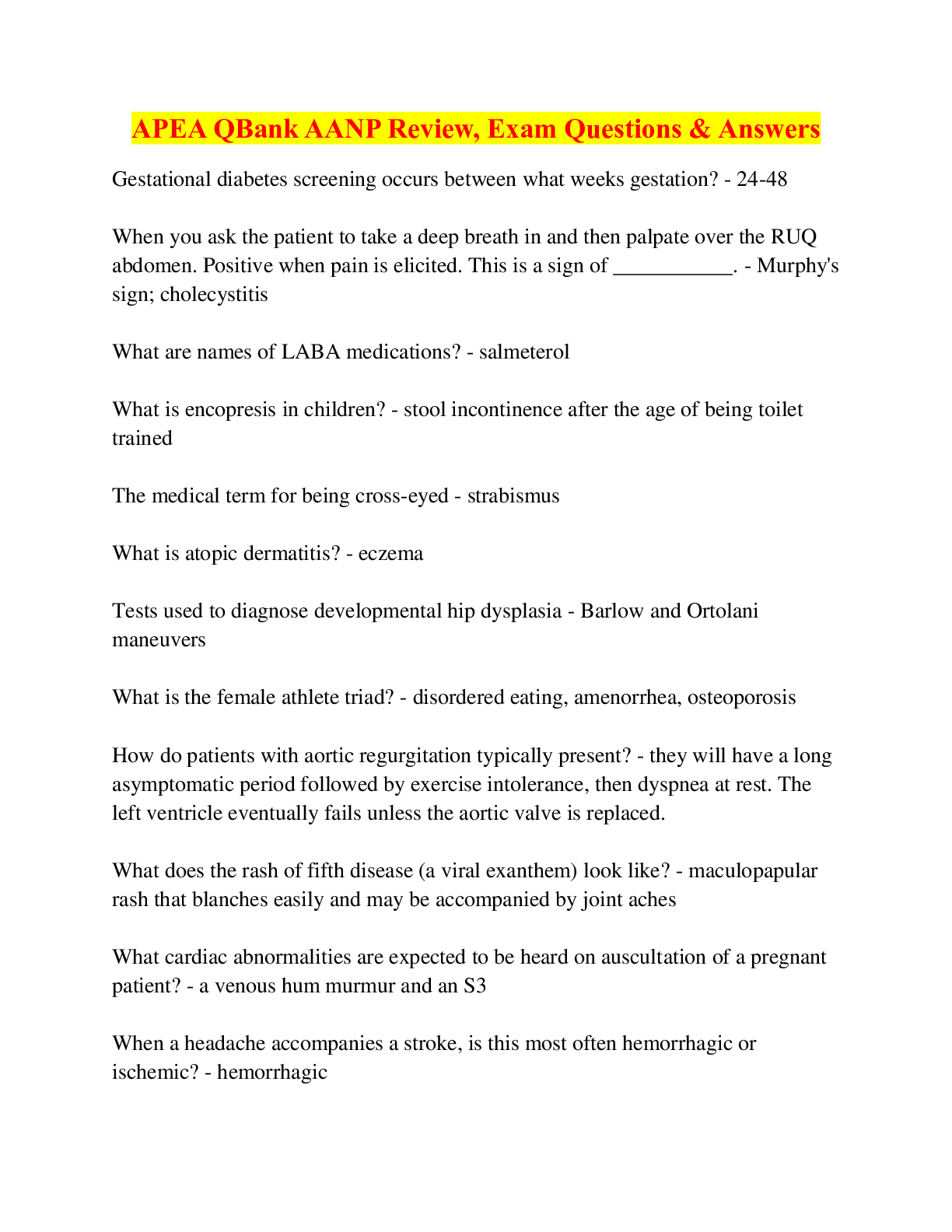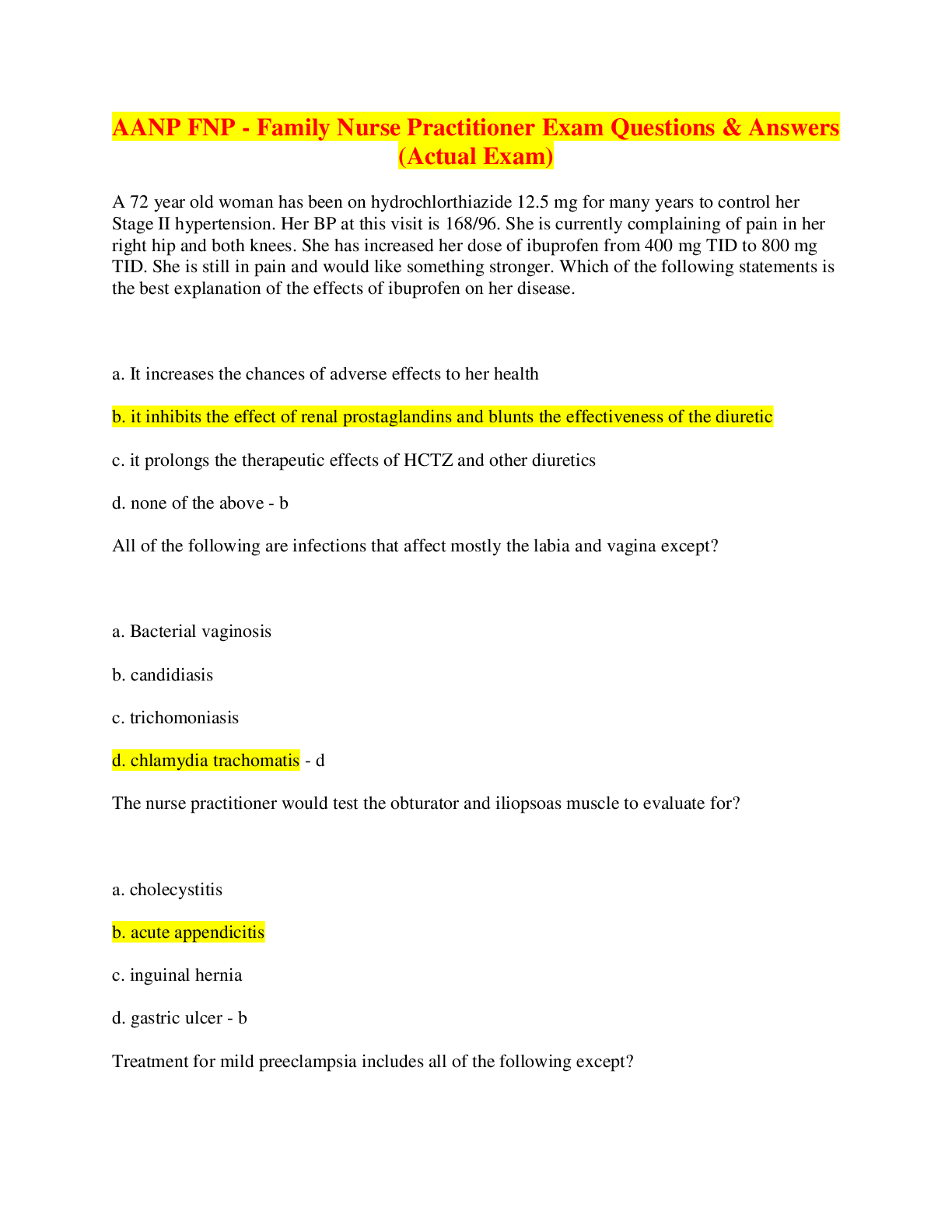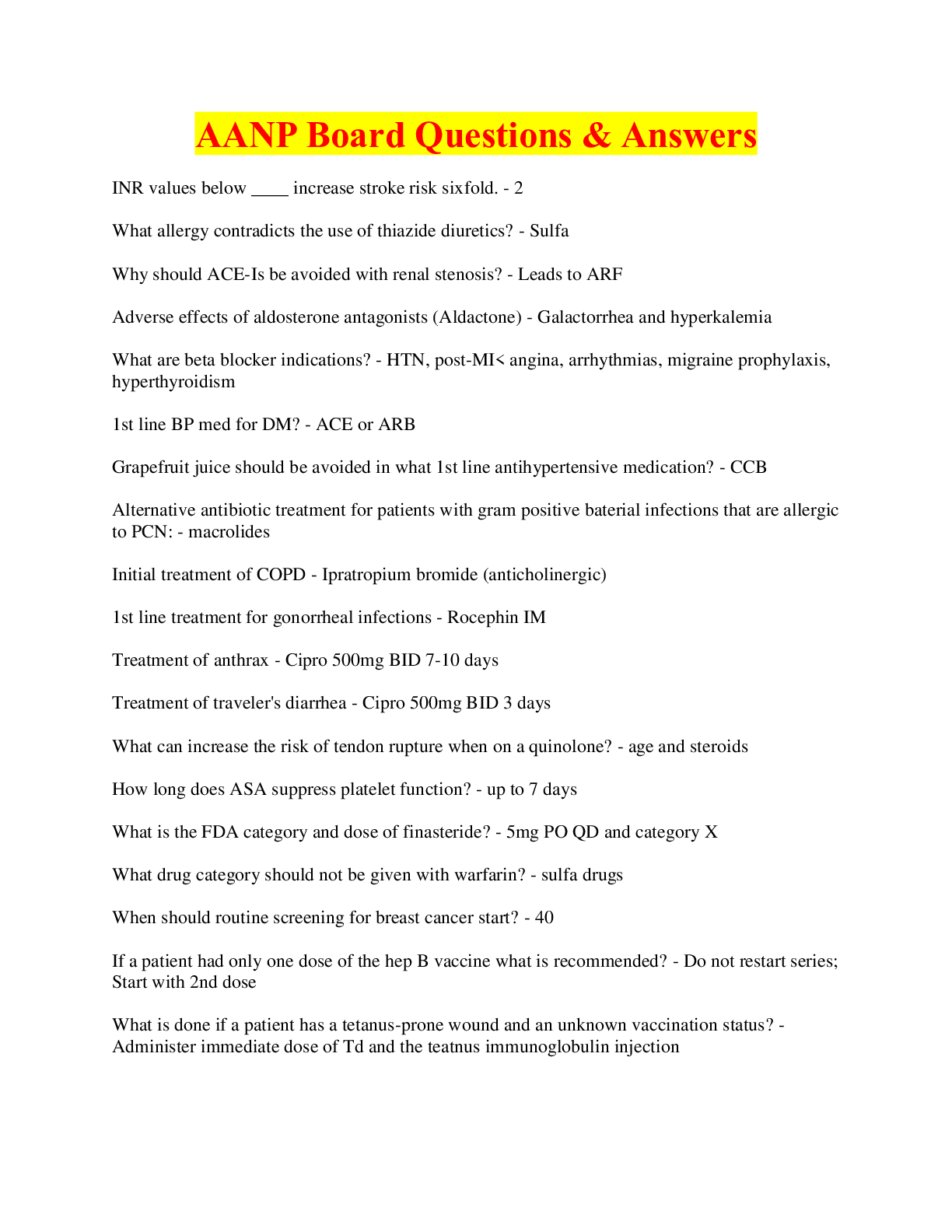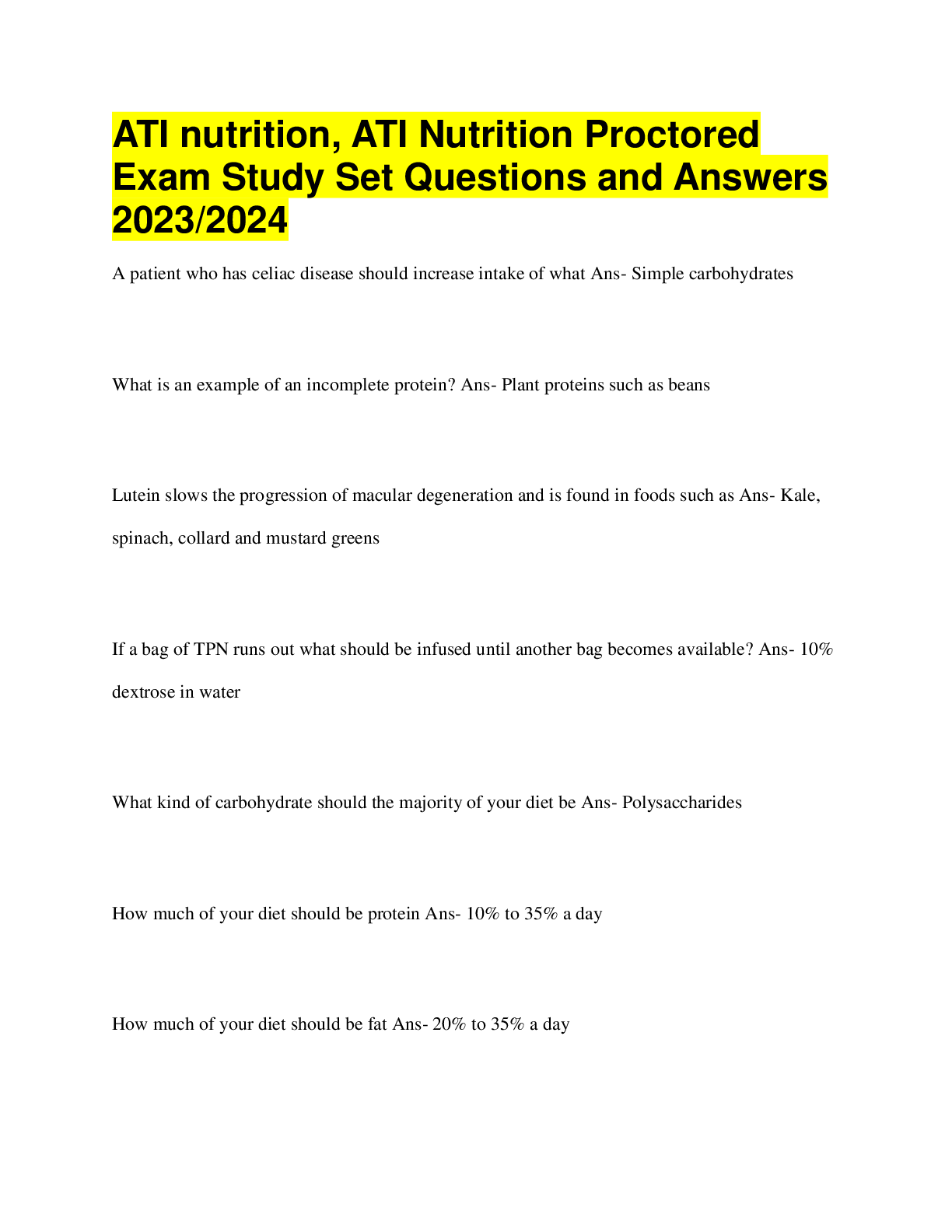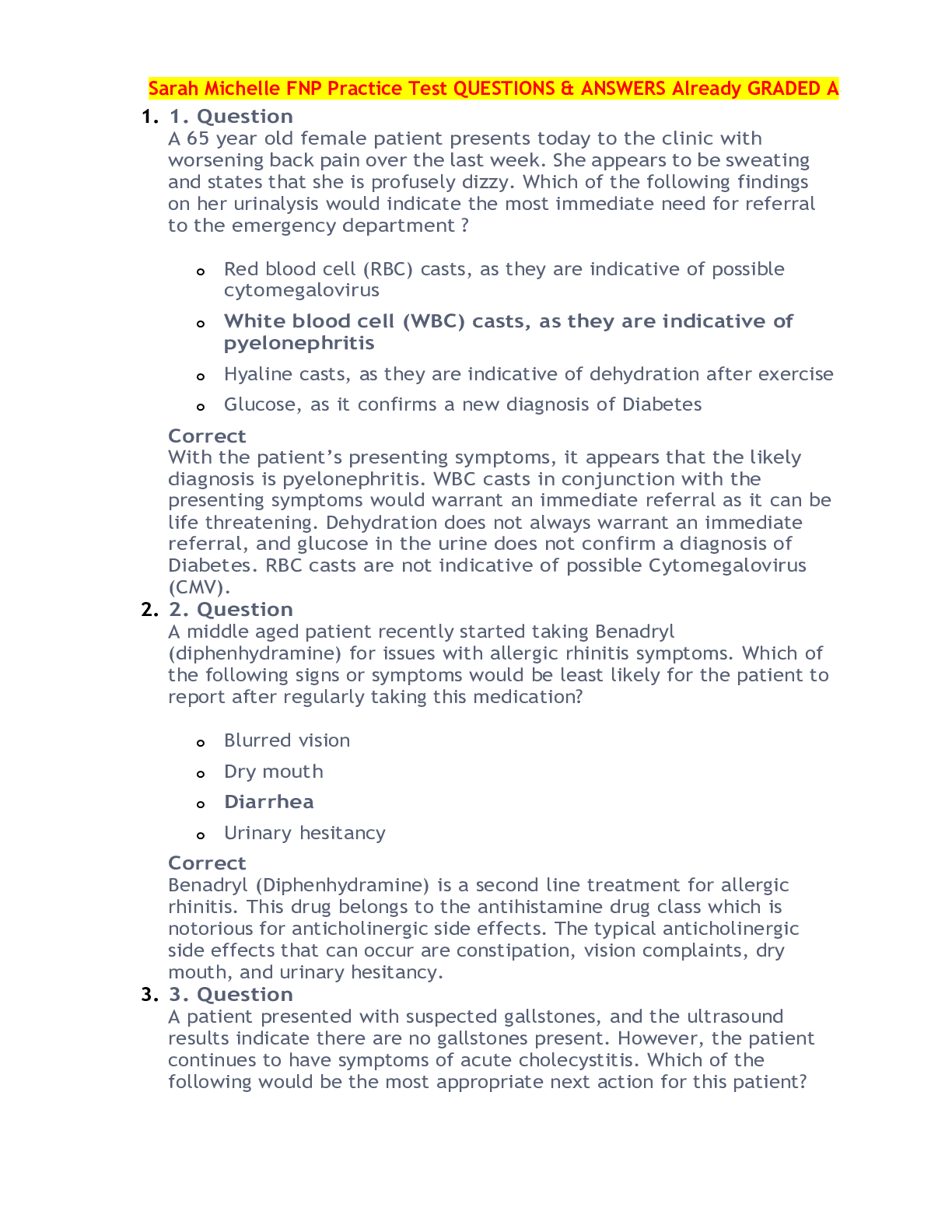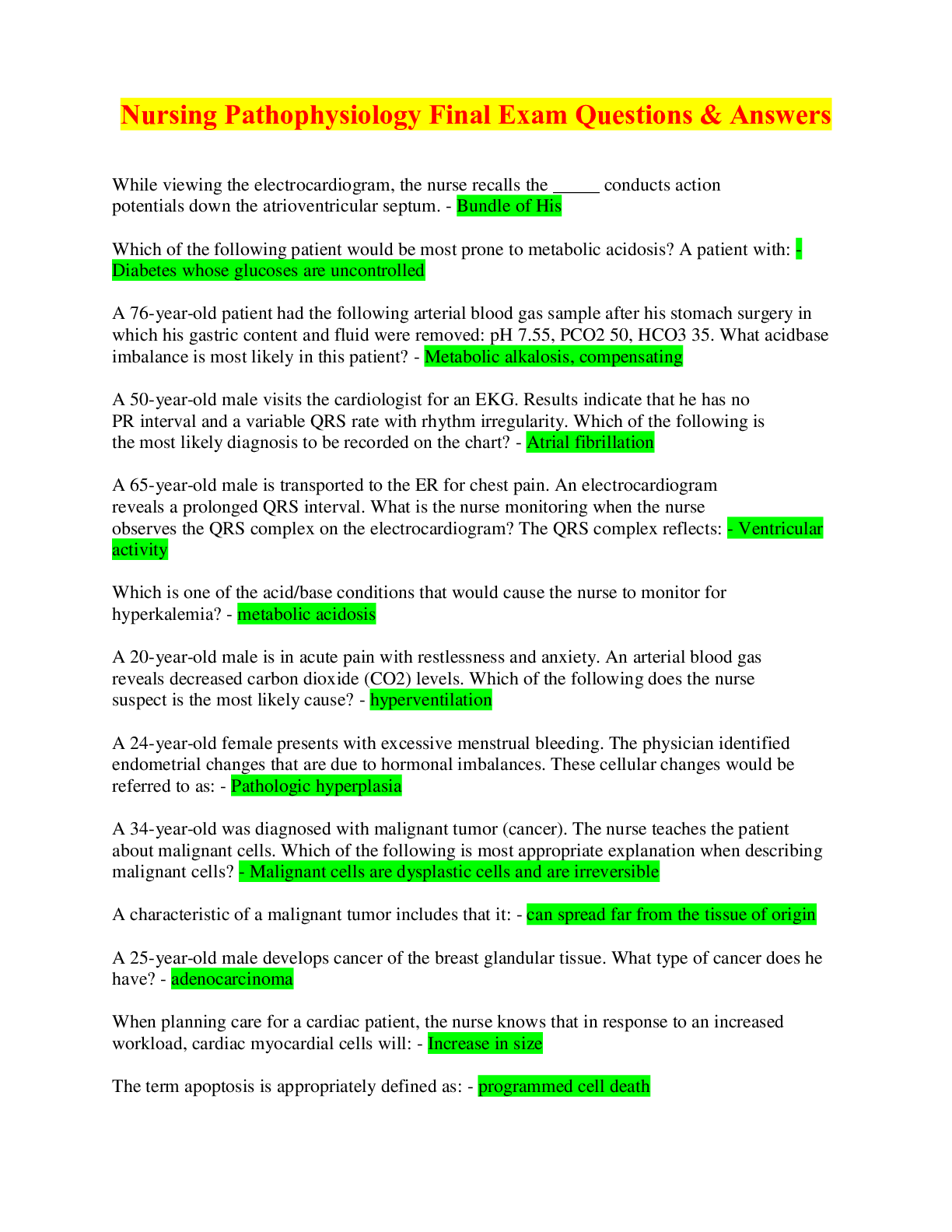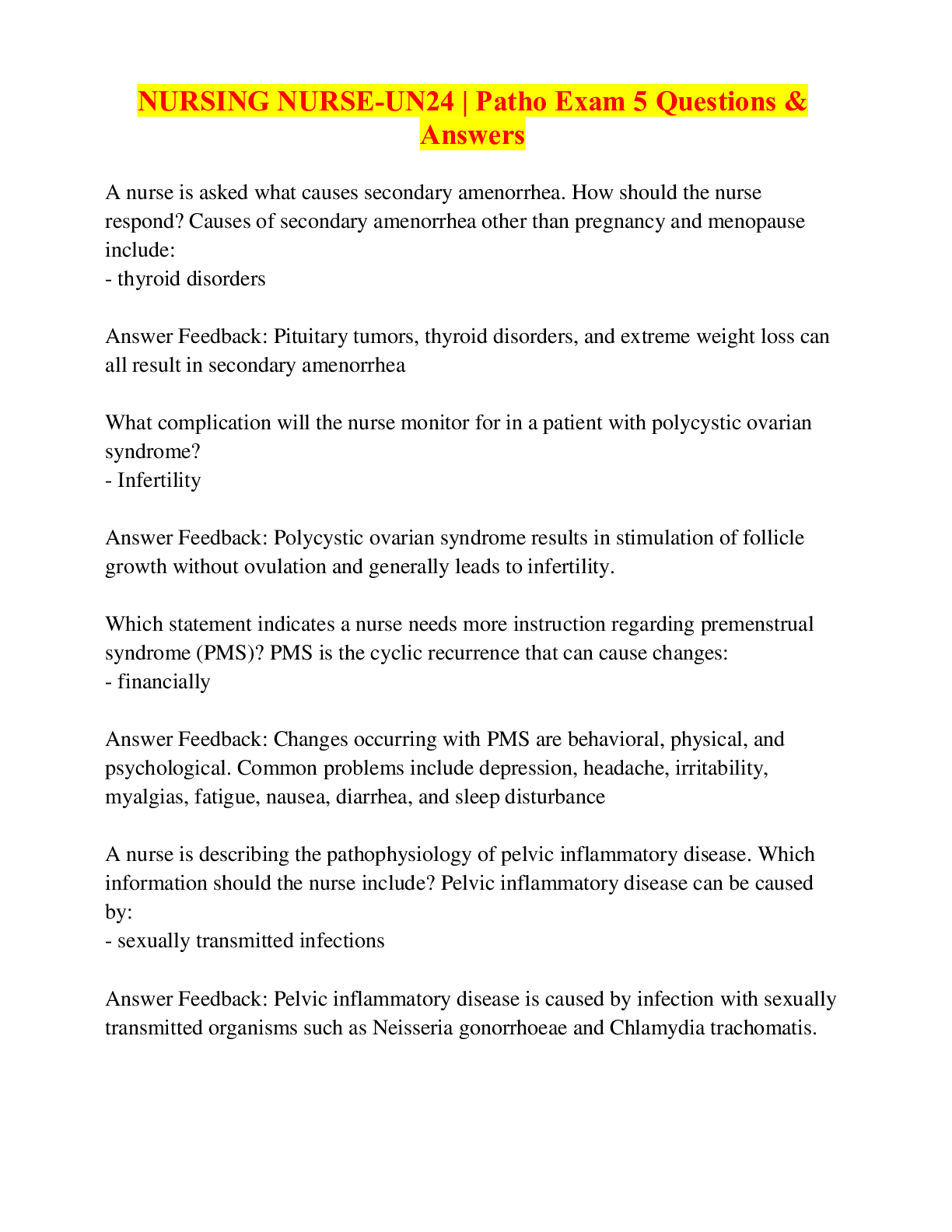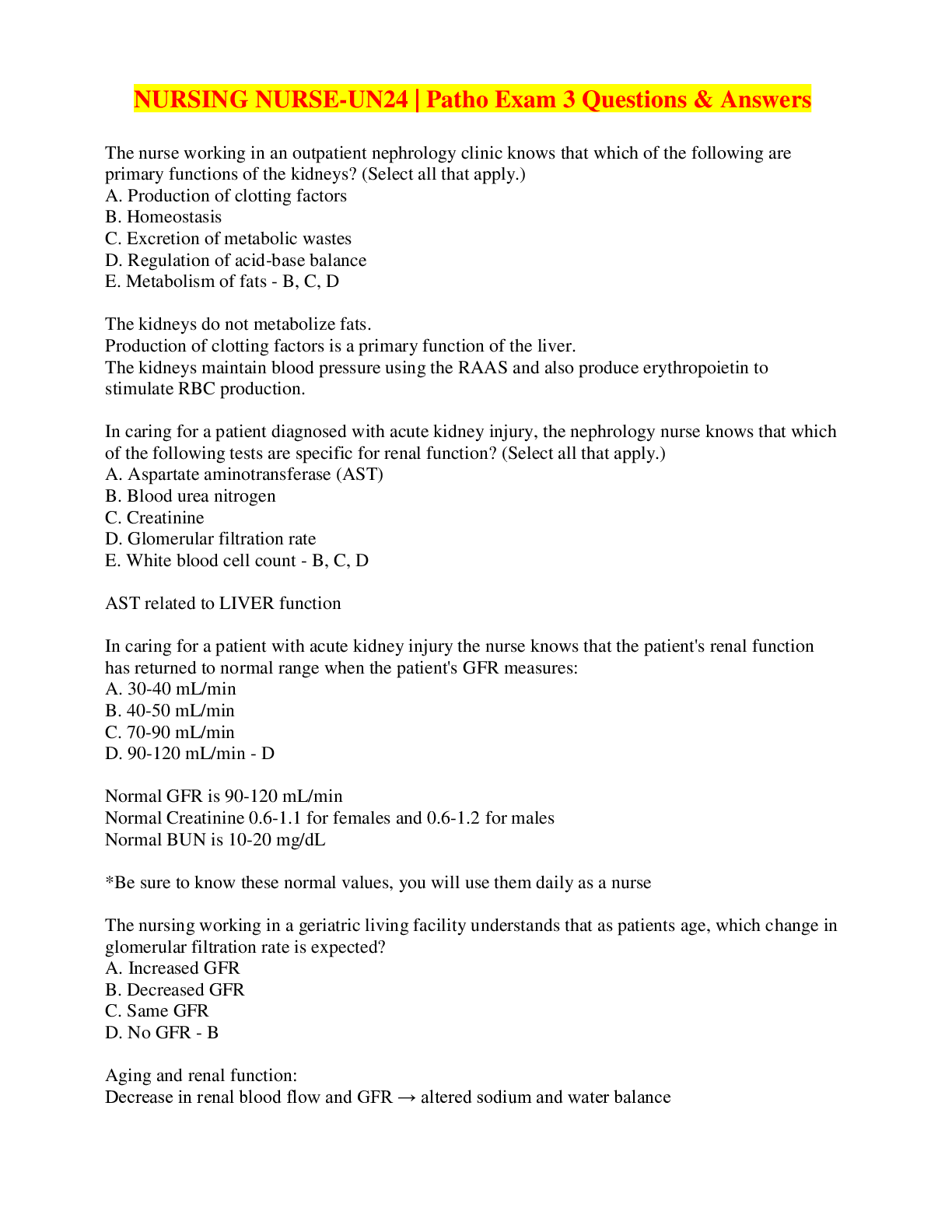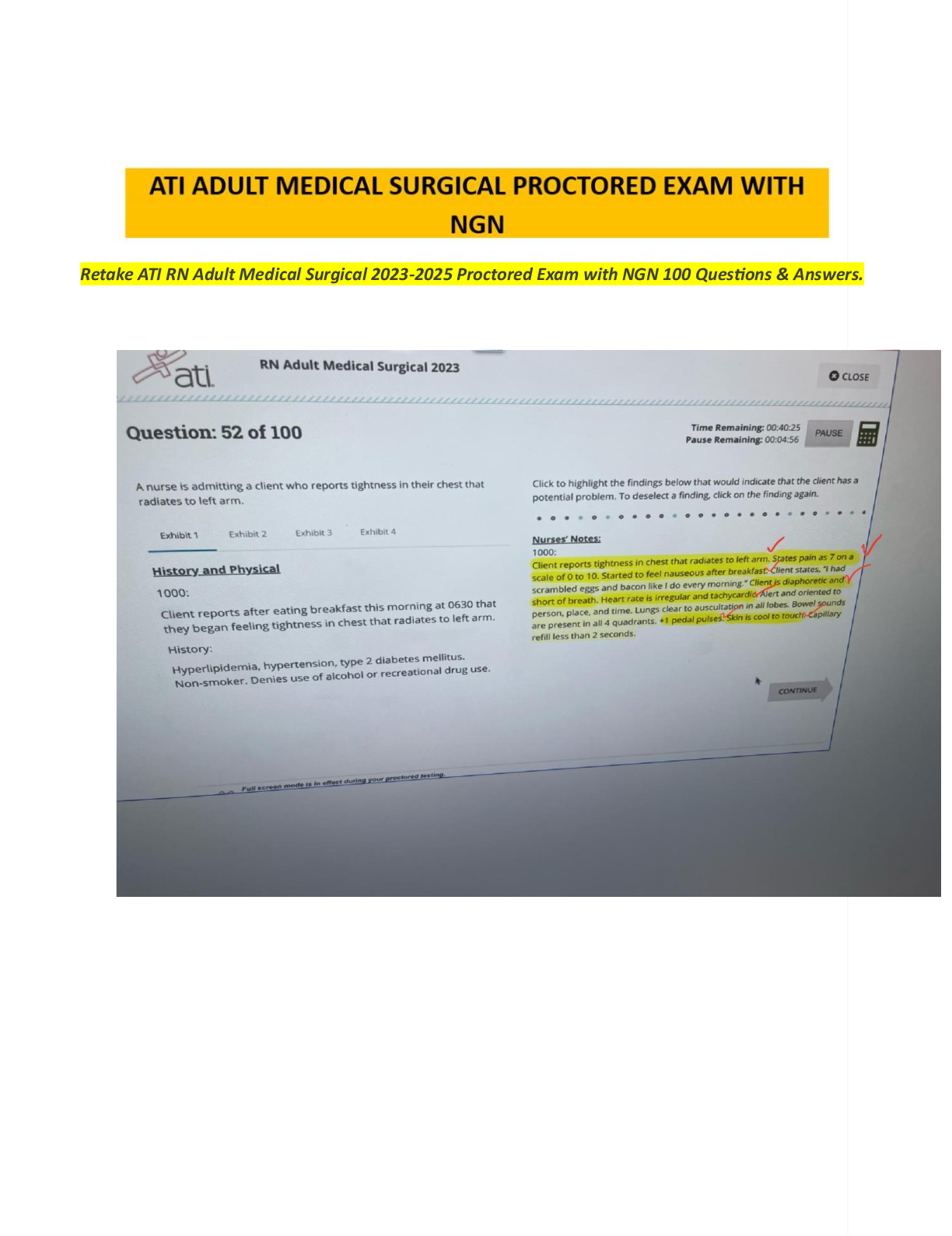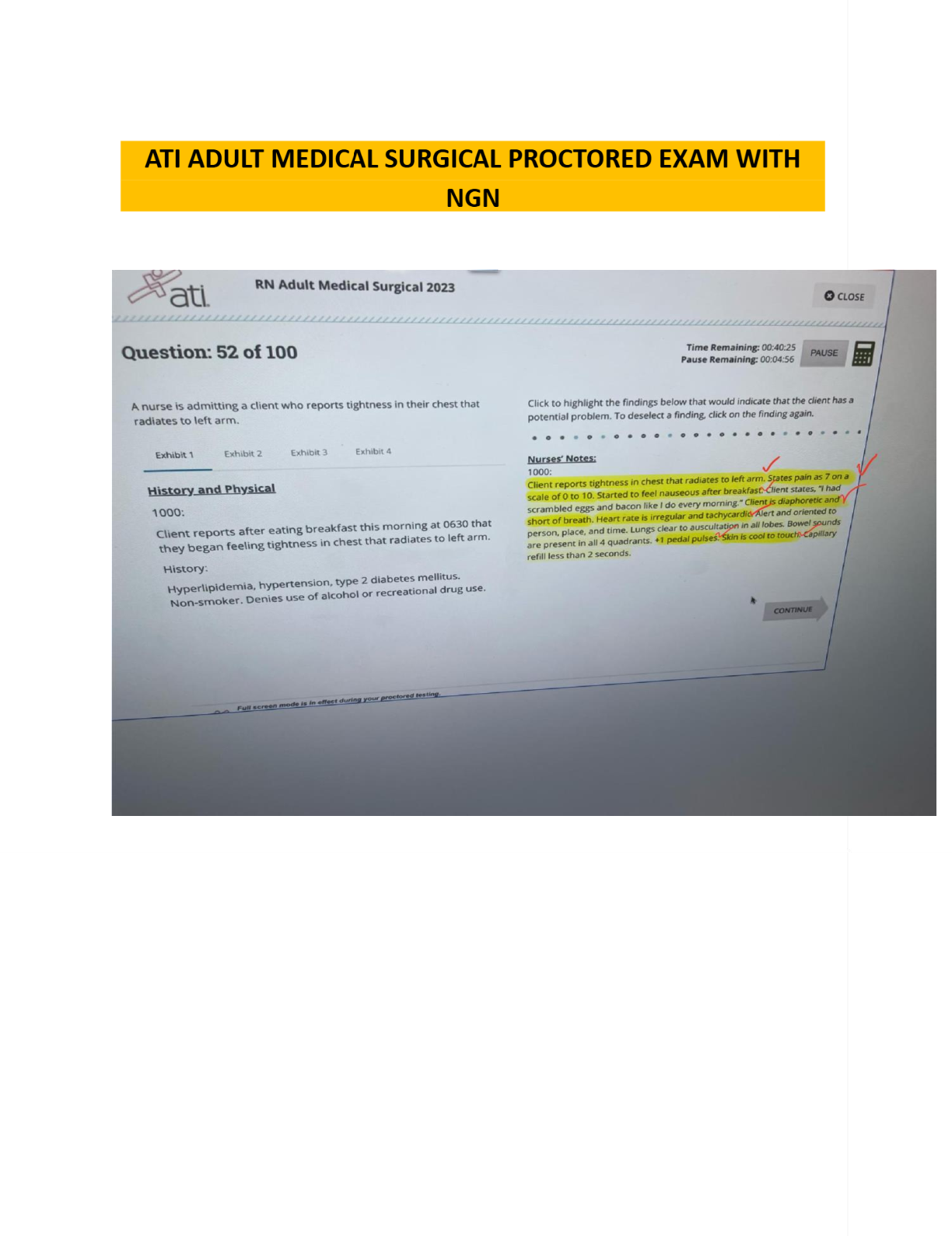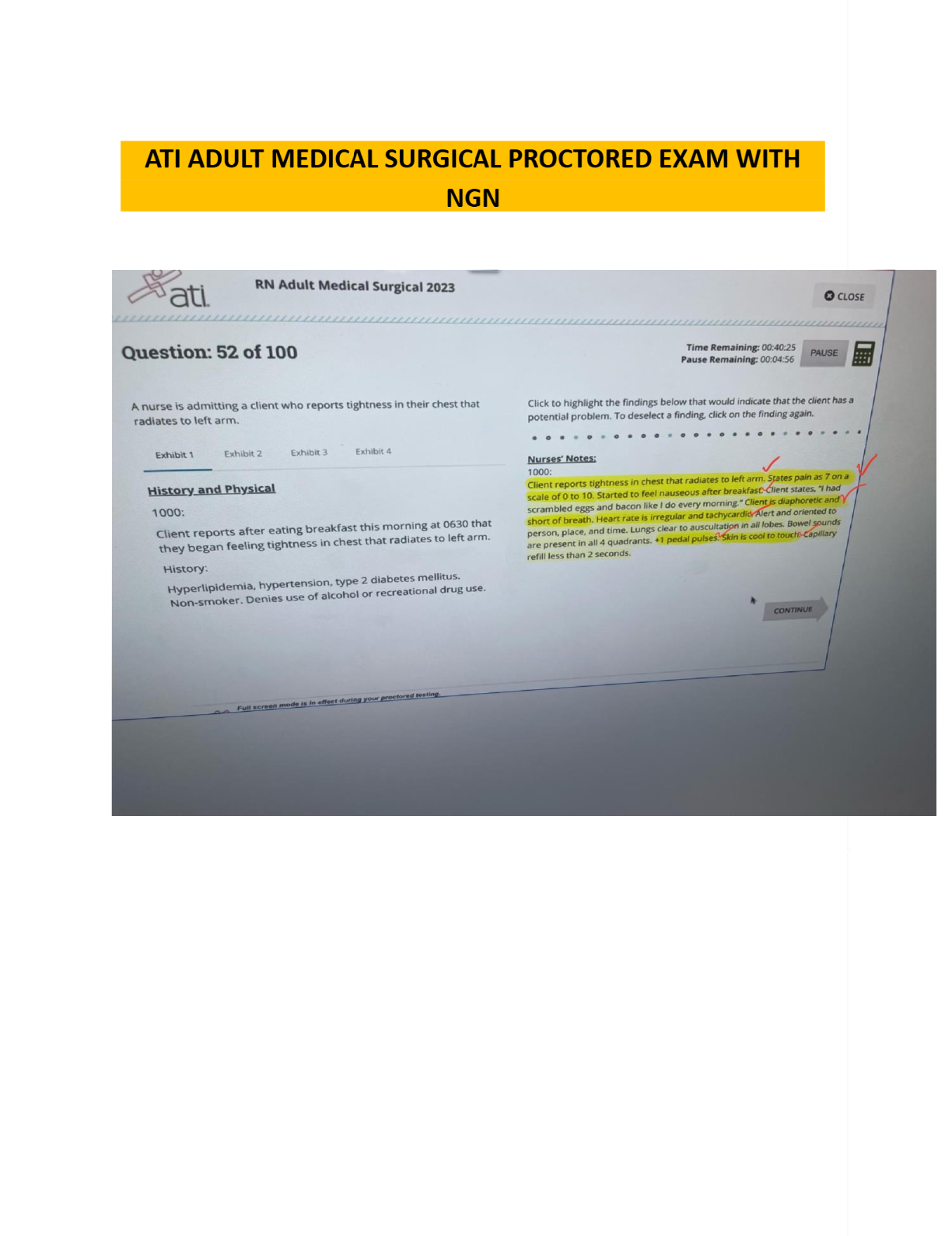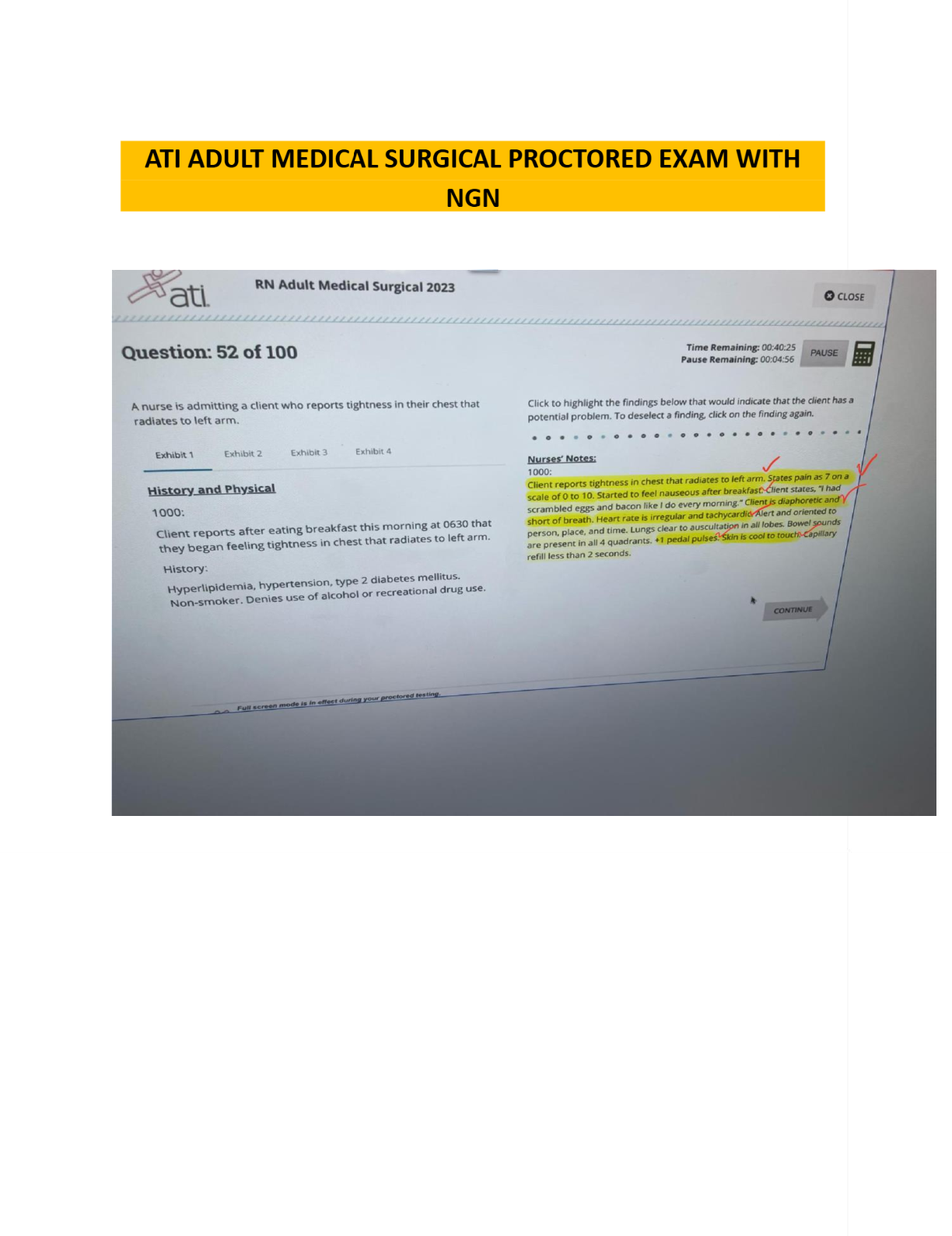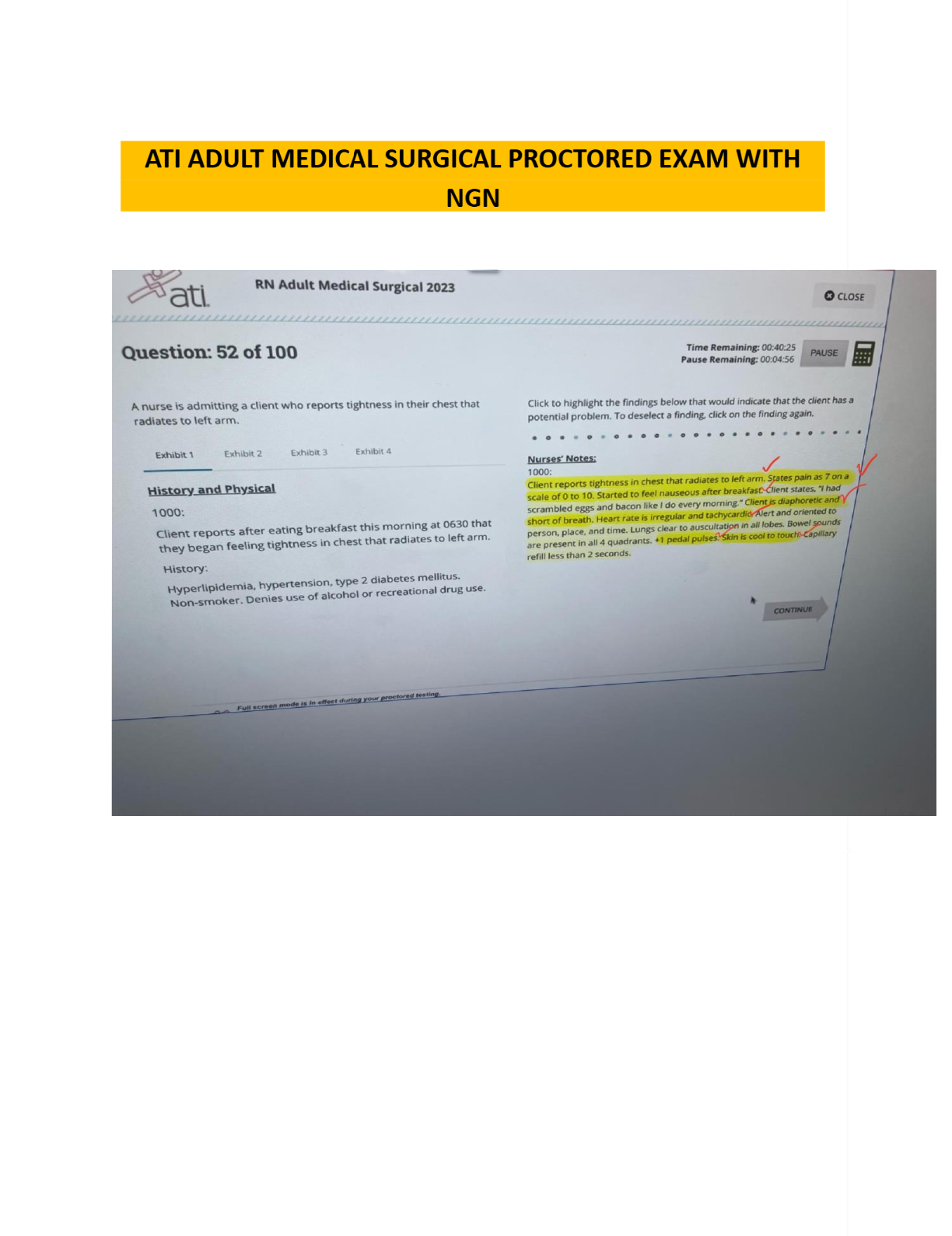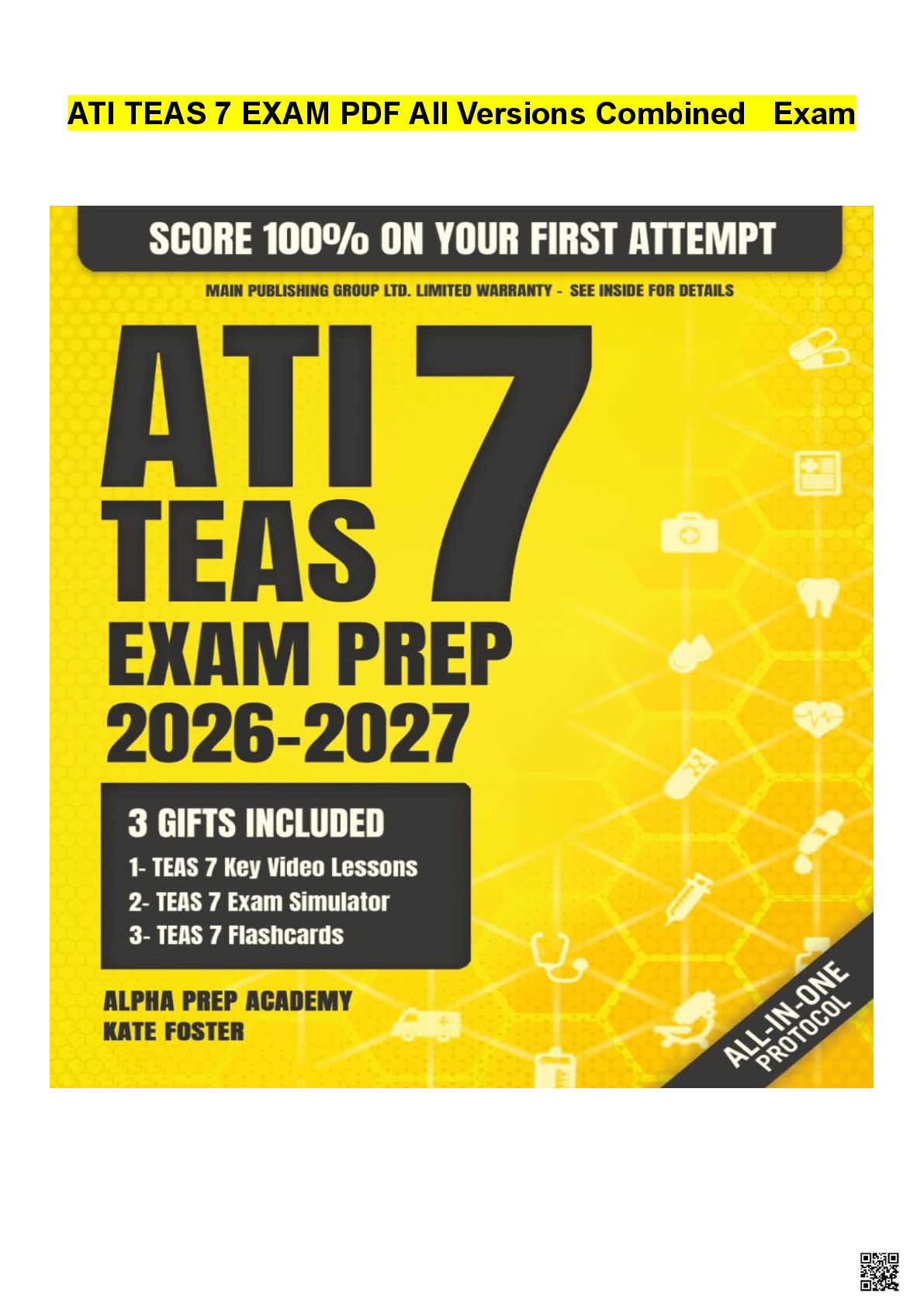NSG 6020 Midterm Exam, Comprehensive Questions & Answers, Graded 100%
Document Content and Description Below
NSG 6020 Midterm Exam, Comprehensive Questions & Answers, Graded 100%-A patient tells the nurse that she has had abdominal pain for the past week. What would be the best response by the nurse? - "Ca ... n you point to where it hurts?" A patient's laboratory data reveal an elevated thyroxine level. The nurse would proceed with an examination of the: - Thyroid A 6-month-old infant has been brought to the well-child clinic for a check-up. She is currently sleeping. What should the examiner do first? - Auscultate the lungs and heart while the infant is still sleeping When preparing to examine a 6-year-old child, which action is most appropriate? - Start with the thorax, abdomen, and genitalia before examining the head. Avoid talking about the equipment being used because it may increase the child's anxiety. Keep in mind that a child this age will have a sense of modesty. Have the child undress from the waist up. 68-year-old woman is in the eye clinic for a checkup. She tells the nurse that she has been having trouble with reading the paper, sewing, and even seeing the faces of her grandchildren. On examination, the nurse notes that she has some loss of central vision but her peripheral vision is normal. These findings suggest that: - She may have macular degeneration In assessing a patient's major risk factors for heart disease, which would the nurse want to include when taking a history? 1.Family history, hypertension, stress, age 2.Personality type, high cholesterol, diabetes, smoking 3.Smoking, hypertension, obesity, diabetes, high cholesterol 4.Alcohol consumption, obesity, diabetes, stress, high cholesterol - 3. Smoking, hypertension, obesity, diabetes, high cholesterol A teenage patient comes to the emergency department with complaints of an inability to breathe and a sharp pain in the left side of his chest. The assessment findings include cyanosis, tachypnea, tracheal deviation to the right, decreased tactile fremitus on the left, hyperresonance on the left, and decreased breath sounds on the left. The nurse interprets that these assessment findings are consistent with: - a pneumothorax During a hearing assessment the nurse practitioner finds that sound lateralizes to the patient's left ear with the Weber test. What can the nurse practitioner conclude from this? - The patient has a conductive hearing loss in the right ear. Lateralization is a normal finding with the Weber test. The patient could have either a sensorineural or a conductive loss. A mistake has occurred; the test must be repeated. The most important reason to share information and offer brief teaching while performing the physical examination is to help: 1.the examiner feel more comfortable and gain control of the situation. 2.build rapport and increase the patient's confidence in the examiner. 3.the patient understand his or her disease process and treatment modalities. 4.the patient identify questions about his or her disease and potential areas of patient education. - 2. build rapport and increase the patient's confidence in the examiner. In assessing the sclera of a black patient, which of the following would be an expected finding? - The presence of small brown macules on the sclera During an examination, the nurse knows that the best way to palpate the lymph nodes in the neck is described by which statement? - Using gentle pressure, palpate with both hands to compare the two sides. The nurse is obtaining a history from a 30-year-old male patient and is concerned about health promotion activities. Which of the following questions would be appropriate to use to assess health promotion activities for this patient? 1. "Do you perform testicular self-exams?" 2. "Have you ever noticed any pain in your testicles?" 3. "Have you had any problems with passing your urine?" 4. "Do you have any history of sexually transmitted disease?" - 1. "Do you perform testicular self-exams?" When examining a 16-year-old male teenager, the examiner should: - provide feedback that his body is developing normally and discuss the wide variation among teenagers on the rate of growth and development. Which of the following statements regarding the aging adult and abdominal assessment is true? - the abdominal musculature is thinner In recording the childhood illnesses of a patient who denies having had any, which of the following notes by the nurse would be most accurate? 1. Patient denies usual childhood illnesses. 2. Patient states he was a "very healthy" child. 3. Patient states sister had measles, but he didn't. 4. Patient denies measles, mumps, rubella, chickenpox, pertussis, or strep throat. - 4. Patient denies measles, mumps, rubella, chickenpox, pertussis, or strep throat. A patient's thyroid is enlarged, and the nurse is preparing to auscultate the thyroid for the presence of a bruit. A bruit is a: - soft, whooshing, pulsatile sound best heard with the bell of the stethoscope. During an examination, the nurse knows that Paget's disease would be indicated by which of the following findings? - Paget's disease occurs more often in males and is characterized by bowed, long bones, sudden fractures, and enlarging skull bones that press on cranial nerves causing symptoms of headache, vertigo, tinnitus, and progressive deafness. A patient is unable to read the 20/100 line on the Snellen chart. The nurse practitioner would - refer the patient to an ophthalmologist or optometrist for further evaluation. Which technique of assessment is used to determine the presence of crepitus, swelling, and pulsations? - Palpation During a cardiac assessment on an adult patient in the hospital for "chest pain," the nurse finds the following: jugular vein pulsations 4 cm above sternal angle when he is elevated at 45 degrees, BP 98/60, HR 130; ankle edema; difficulty in breathing when supine; and an S3 on auscultation. Which of the following best explains the cause of these findings? 1.Fluid overload 2.Atrial septal defect 3.Myocardial infarction 4.Heart failure - 4. heart failure [Show More]
Last updated: 1 year ago
Preview 1 out of 12 pages

Buy this document to get the full access instantly
Instant Download Access after purchase
Buy NowInstant download
We Accept:

Reviews( 0 )
$11.50
Can't find what you want? Try our AI powered Search
Document information
Connected school, study & course
About the document
Uploaded On
Feb 08, 2024
Number of pages
12
Written in
All
Additional information
This document has been written for:
Uploaded
Feb 08, 2024
Downloads
0
Views
30

